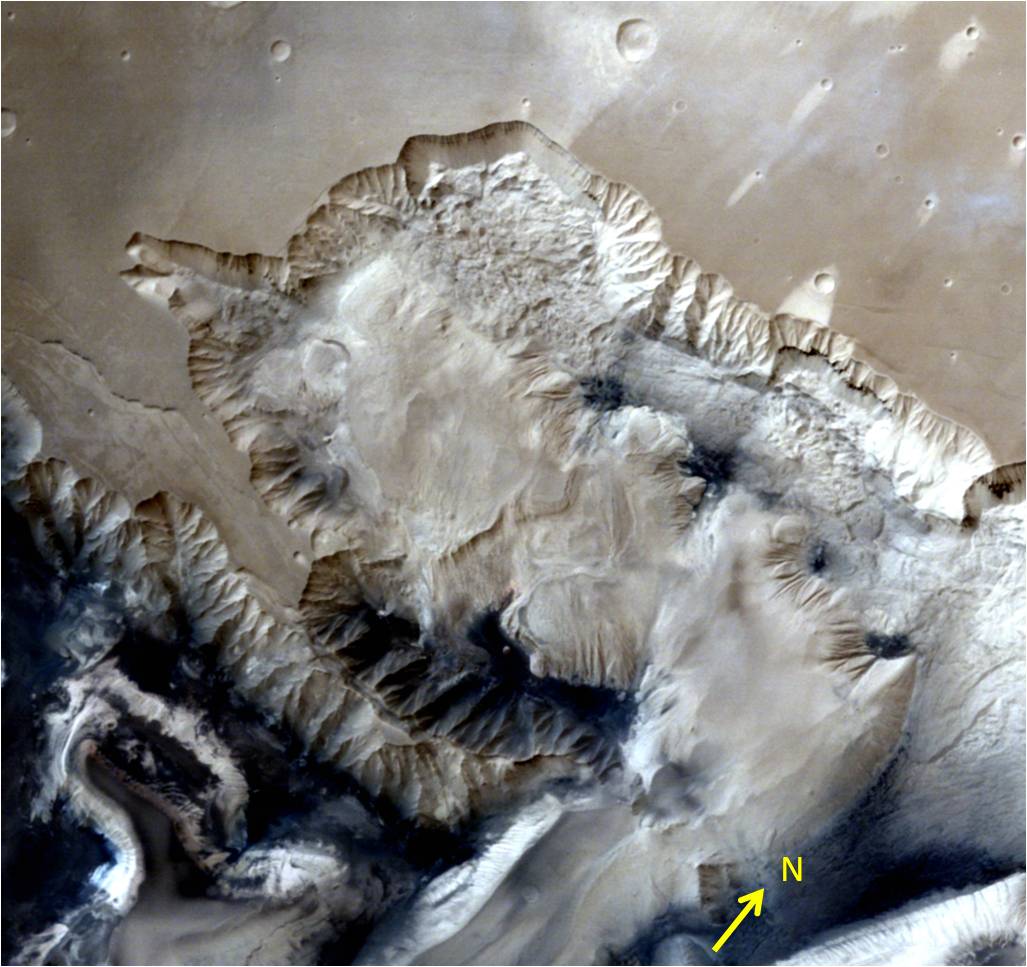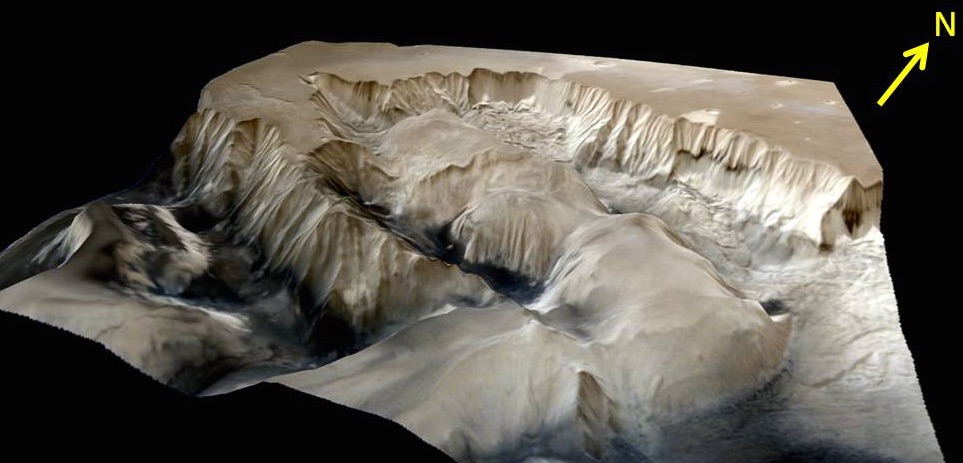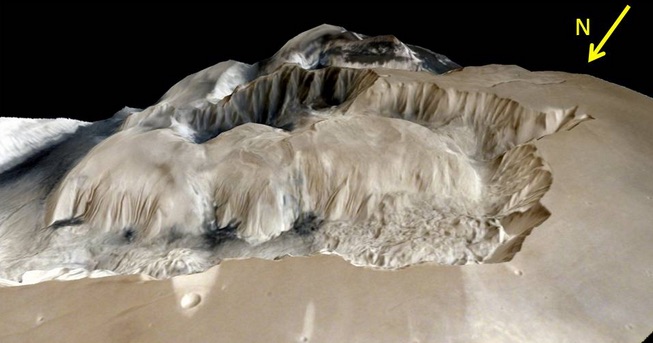India's 1st Mars Probe Captures Stunning 3D View of Huge Chasm

India's first mission to Mars has captured a stunning new 3D view of a vast chasm, revealing gullies shaped by erosive forces on the Red Planet.
The images, sent back by India's Mars Orbiter Mission (MOM), show Ophir Chasma, a portion of the massive Valles Marineris system that stretches across much of the planet's equator. The images were taken July 19 and have a resolution of about 315 feet (96 meters).
The new images show the chasm from above and two different views of the sides, revealing hills, small impact craters and gullies shaped by landslides. [See more Mars photos by India's MOM probe]

"The walls of the chasma contain many layers, and the floors contain large deposits of layered materials," Indian Space Research Organization officials said in a statement.
According to NASA, the chasm is the northernmost connected valley in Valles Marineris, which is about 2,500 miles (4,000 kilometers) long. The cliffs visible in the images were likely caused by faults that crumbled over time, due to landslides.
"The volume of the landslide debris is more than 1,000 times greater than that from the May 18, 1980, debris avalanche from Mount St. Helens," NASA officials wrote in 2011. NASA spacecraft Mariner 9 first discovered Valles Marineris in 1972, along with the massive Olympus Mons — the largest planetary volcano in the solar system.

Get the Space.com Newsletter
Breaking space news, the latest updates on rocket launches, skywatching events and more!
MOM, which is India's first Martian spacecraft, arrived at the Red Planet in September 2014. One of its first images was a picture of Mars as a full disc. It also observed Comet Siding Spring when the comet flew past the planet a month later.
Besides these images of the chasm, MOM's Mars Color Camera has imaged locations on Mars such as Gale Crater, where NASA's Opportunity crater roams, and Tyrrhenus Mons, a large volcano.
Follow Elizabeth Howell @howellspace, or Space.com @Spacedotcom. We're also on Facebook and Google+. Original article on Space.com.
Join our Space Forums to keep talking space on the latest missions, night sky and more! And if you have a news tip, correction or comment, let us know at: community@space.com.

Elizabeth Howell (she/her), Ph.D., was a staff writer in the spaceflight channel between 2022 and 2024 specializing in Canadian space news. She was contributing writer for Space.com for 10 years from 2012 to 2024. Elizabeth's reporting includes multiple exclusives with the White House, leading world coverage about a lost-and-found space tomato on the International Space Station, witnessing five human spaceflight launches on two continents, flying parabolic, working inside a spacesuit, and participating in a simulated Mars mission. Her latest book, "Why Am I Taller?" (ECW Press, 2022) is co-written with astronaut Dave Williams.









